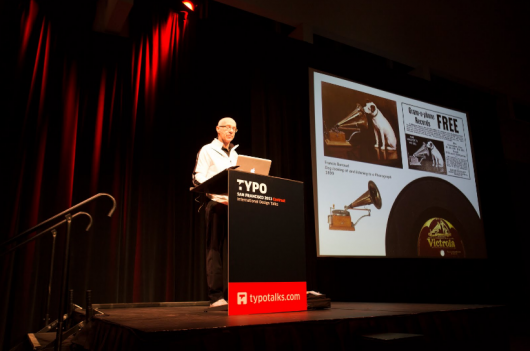His address takes us through the records and music boxes from the early 19th century. The Pianola was the first successful device after much experimentation of initial piano designs. Chinese soon figured out the way to mass-produce cylinders and records. By 1918 The Victor Company became the biggest name in the music industry. Eldridge Johnson was the Steve Jobs of the music industry of those days. He used big name artists and spent big bucks on marketing. Lot of advertisements were used. (And we get to hear some of the fantastic tunes of the time!) The advertisements had logos as the largest part of the design, with beautiful people.
We go through 1940s and the major changes in record designs. Electronic recording began in 1925. Style changed from Historic to Art Deco. We hear the differences in without and with Hi-Fi. Then we get to experience the Country Music of the 40s. By that time, jukeboxes had 4 times the number of selections. Graphics went through similar transition as the color TV. The “Concept Album” emerged. In the Wee Small Hours of the Morning…High Fidelity magazine from the 50s was an expensive project that led to many emergent works.
Stereo 1958
Stereo appeared in Europe in 1890s, but did not get adopted in America immediately. Decca Records first released it in Adventures in Stereo in 1958. Then it was used by many record companies as the next revolution. Sears’ Christmas Catalog of 1958 covered it on the cover. Wide screen and wide orchestra came about. However the technology fell through the wayside. Album cover by Joe Albers for Provocative Percussion reflected the stereo phenomenon. Electronic Re-channelling was another disruption for stereo. Hendrix created remarkable stereo effects in 1968. Surround Sound did not catch up until later when houses were twice the size.
We end with a stereo sound and a slideshow of stereo work from the 1960s.
Text — Deepika Padam

























Pingback: Quick Guide To EQ and Filters - Making Music